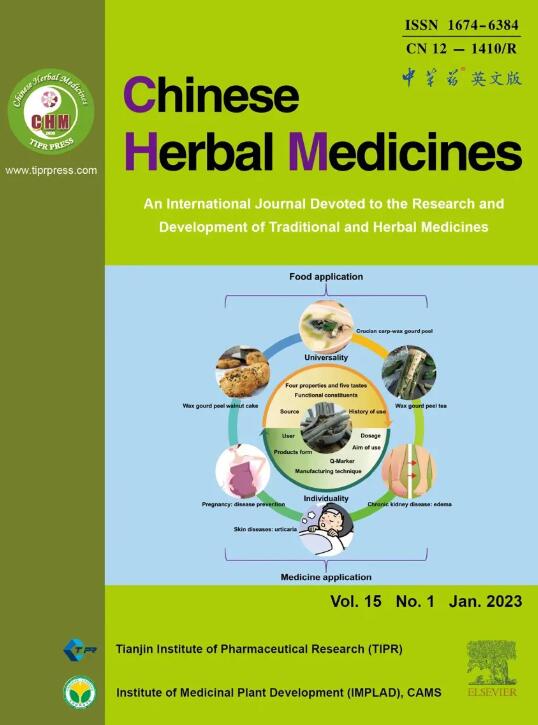Paris saponin VII induces Caspase-3/GSDME-dependent pyroptosis in pancreatic ductal adenocarcinoma cells by activating ROS/Bax signaling
IF 8.9
4区 医学
Q1 CHEMISTRY, MEDICINAL
引用次数: 0
Abstract
Objective
Paridis Rhizoma (Chonglou in Chinese), a traditional Chinese herbal medicine, has been shown have strong anti-tumor effects. Paris saponin VII (PSVII), an active constituent isolated from Paridis Rhizoma, was demonstrated to significantly suppress the proliferation of BxPC-3 cells in our previous study. Here, we aimed to elucidate the anti-pancreatic ductal adenocarcinoma (PDAC) effect of PSVII and the underlying mechanism.
Methods
Cell viability was determined by CCK-8, colony formation, and cell migration assays. Cell apoptosis and reactive oxygen species (ROS) production were measured by flow cytometry with annexin V/propidine iodide (Annexin V/PI) and 2′,7′-dichlorodihydrofluorescein diacetate (DCFH-DA), respectively. Pyroptosis was evaluated by morphological features, Hoechst 33342/PI staining assay, and release of lactate dehydrogenase (LDH). JC-1 fluorescent dye was employed to measure mitochondrial membrane potential. Western blotting and reverse transcription-quantitative polymerase chain reaction (RT-qPCR) were used to determine the levels of proteins or mRNAs. The effect in vivo was assessed by a xenograft tumor model.
Results
PSVII inhibited the viability of PDAC cells (BxPC-3, PANC-1, and Capan-2 cells) and induced gasdermin E (GSDME) cleavage, as well as the simultaneous cleavage of Caspase-3 and poly (ADP-ribose) polymerase 1 (PARP). Knockdown of GSDME shifted PSVII-induced pyroptosis to apoptosis. Additionally, the effect of PSVII was significantly attenuated by Z-Asp(OMe)-Glu(OMe)-Val-Asp(OMe)-fluoromethylketone (Z-DEVD-FMK), on the induction of GSDME-dependent pyroptosis. PSVII also elevated intracellular ROS accumulation and stimulated Bax and Caspase-3/GSDME to conduct pyroptosis in PDAC cells. The ROS scavenger N-acetyl cysteine (NAC) suppressed the release of LDH and inhibited Caspase-9, Caspase-3, and GSDME cleavage in PDAC cells, ultimately reversing PSVII-induced pyroptosis. Furthermore, in a xenograft tumor model, PSVII markedly suppressed the growth of PDAC tumors and induced pyroptosis.
Conclusion
These results demonstrated that PSVII exerts therapeutic effects through Caspase-3/GSDME-dependent pyroptosis and may constitute a novel strategy for preventing chemotherapeutic resistance in patients with PDAC in the future.
巴黎皂苷 VII 通过激活 ROS/Bax 信号,诱导胰腺导管腺癌细胞发生 Caspase-3/GSDME 依赖性热凋亡
目的重楼是一种具有较强抗肿瘤作用的中草药。巴黎皂苷VII (Paris saponin VII, PSVII)是一种从Paridis Rhizoma中分离得到的活性成分,我们在之前的研究中发现它能显著抑制BxPC-3细胞的增殖。本研究旨在阐明PSVII抗胰腺导管腺癌(PDAC)的作用及其机制。方法采用CCK-8法、菌落形成法和细胞迁移法测定细胞活力。用膜联蛋白V/碘化丙啶(annexin V/PI)和2′,7′-二氯二氢荧光素(DCFH-DA)分别流式细胞术检测细胞凋亡和活性氧(ROS)产生。通过形态学特征、Hoechst 33342/PI染色法和乳酸脱氢酶(LDH)的释放来评估焦亡。采用JC-1荧光染料测定线粒体膜电位。采用Western blotting和逆转录-定量聚合酶链反应(RT-qPCR)检测蛋白或mrna水平。通过异种移植肿瘤模型评估其在体内的效果。结果spsvii抑制PDAC细胞(BxPC-3、PANC-1和Capan-2细胞)的活性,诱导gasdermin E (GSDME)的裂解,以及Caspase-3和聚adp核糖聚合酶1 (PARP)的同步裂解。GSDME敲低将psvii诱导的焦亡转变为细胞凋亡。此外,Z-Asp(OMe)-Glu(OMe)-Val-Asp(OMe)-氟甲基酮(Z-DEVD-FMK)显著减弱PSVII对gsdme依赖性焦亡的诱导作用。PSVII还能提高PDAC细胞内ROS积累,刺激Bax和Caspase-3/GSDME导致PDAC细胞焦亡。活性氧清除剂n -乙酰半胱氨酸(NAC)抑制LDH的释放,抑制PDAC细胞中Caspase-9、Caspase-3和GSDME的切割,最终逆转psvi诱导的焦亡。此外,在异种移植肿瘤模型中,PSVII显著抑制PDAC肿瘤的生长并诱导焦亡。结论PSVII通过Caspase-3/ gsdme依赖性焦亡发挥治疗作用,可能成为未来预防PDAC患者化疗耐药的新策略。
本文章由计算机程序翻译,如有差异,请以英文原文为准。
求助全文
约1分钟内获得全文
求助全文
来源期刊

Chinese Herbal Medicines
CHEMISTRY, MEDICINAL-
CiteScore
4.40
自引率
5.30%
发文量
629
审稿时长
10 weeks
期刊介绍:
Chinese Herbal Medicines is intended to disseminate the latest developments and research progress in traditional and herbal medical sciences to researchers, practitioners, academics and administrators worldwide in the field of traditional and herbal medicines. The journal's international coverage ensures that research and progress from all regions of the world are widely included.
CHM is a core journal of Chinese science and technology. The journal entered into the ESCI database in 2017, and then was included in PMC, Scopus and other important international search systems. In 2019, CHM was successfully selected for the “China Science and Technology Journal Excellence Action Plan” project, which has markedly improved its international influence and industry popularity. CHM obtained the first impact factor of 3.8 in Journal Citation Reports (JCR) in 2023.
 求助内容:
求助内容: 应助结果提醒方式:
应助结果提醒方式:


